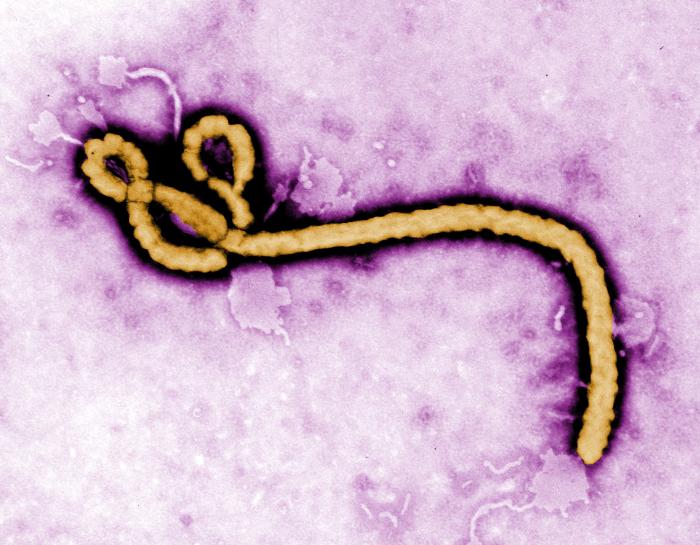Yoga in the NBA -Teams add to their strength and conditioning programs — Every NBA player — frankly, nearly every athlete — has an internal clock counting down the days until he can no longer play the game professionally. In that time, he is likely to make an incredible amount of money. And he is to do it while playing a sport which he is likely to have loved for all, or at least most, of his life. It only makes sense for each player to maximize his time at the highest level by ensuring his body is physically fit and his mind mentally prepared to endure the various stresses that each new season brings. This is why yoga has become a valued training method for NBA players.
While most players seem to take up the India-originated discipline on their own time, there are a few teams around the League that give their players an opportunity to practice it.
The Denver Nuggets are one of those teams, having employed a yoga instructor for the past seven years to work with players primarily during the offseason. The Atlanta Hawks hired a yoga instructor before this season to train their players in the finer points of the discipline. The New York Knicks used to have a yoga instructor occasionally visit their practice facility in Westchester, just outside New York City, yet a team representative confirmed they no longer do so. Then there are the Los Angeles Clippers, a long-moribund franchise which isn’t often associated with progressiveness. Yet that’s exactly what they are when the subject falls on yoga in the NBA.

For the past eight years, they’ve employed yoga instructor Kent Katich to work their players through yoga sessions, with Katich gradually becoming more involved with players’ training regimens each season. Even though he’s not listed on the staff directory on the Clippers’ website, he travels with the team and is on the court pregame to help warm up players.
That there is even one NBA team which has a yoga instructor on the payroll is fairly surprising. Yoga has a fundamental association with nature and soft music and showing one’s sensitive side. That doesn’t jive with an NBA environment that is filled with aggressiveness, even ruthlessness. “Soft” doesn’t work; NBA players can read through someone trying to tap into their inner self.
“You can’t talk about the sun and opening your heart,” Katich said. “[The players] are going to shut you off, and they’re going to laugh at you.”
Katich, who played basketball at the University of South Dakota and professionally in Sweden during the 1980s, practices a physical brand of yoga that helps players’ breathing patterns, flexibility, balance, strength, body awareness and self-consciousness. He tests players physically, but he said he piques their interest more by just fitting in.
Many of the Clippers have bought what Katich is teaching. “Yoga helps center you, especially for what we do,” said Clippers guard Baron Davis. “If you can find a place that keeps you centered, both mentally and physically, it can help push your game to the next level.”
The biggest hurdle for someone in an instructor’s position is to earn a player’s trust, Katich said. To earn their trust means earning their respect, which makes it easier for him to introduce the player to a type of training with which he might not be familiar.
Katich told of one practice when he was helping warm up two players, one of whom was new to the team. The players began talking about a subject which normally would be off-limits for trainers, coaches and others. The new player looked hesitantly at Katich, wary of letting someone else into the conversation. Yet the other player sensed it and told him that Katich was cool. “They have to know they can trust you,” Katich said.
Trust Katich, they do; the list of NBAers who work with him is exhaustive. In addition to practically any Clipper of the past eight seasons, Dirk Nowitzki, Kevin Love, Andre Iguodala and Danilo Gallinari have trained with Katich. In fact, Katich estimates he’s put at least 25 percent of the players in the League through some type of yoga movement. Name a team, and he’ll tick off three or four players he’s trained.
To be a yoga instructor for an NBA squad is an awkward experience. Katich is an independent teacher, as are Nancy Nielsen, who trains the Nuggets, and Michelle Young, who works with the Hawks. Their work must coincide with the goals of the team’s training staff. Katich cited other variables at play.
Upper management may not want to pay for a training activity which they consider a luxury rather than a necessity. The training staff could feel threatened by the presence of someone who could gain the player’s trust through a different type of exercise. The coach may not view yoga as having much value; even worse, he may just find it weird.
Katich recalled one “very well-known” coach, as he termed it, who wanted yoga to be called stretching around the team. “The players would still call me the Yoga Guy,” Katich said. He noted he has achieved harmony with the Clippers training staff by working within their confines.
A similar dynamic has taken place with the Nuggets. Nielsen has worked with the team twice per week in the offseason for seven years, according to Nuggets strength and conditioning coach Steve Hess. Only on special occasions will she work with players in-season. Still, Hess said they’ve responded well to the program.
“The guys generally like it, and I’m finding more often the guys who go back to their cities during the offseason, they’ll definitely look into [practicing it more],” Hess said.
He explained that NBA players are much like athletes in other professional sports — they’ve evolved their taste for training in order to stay ahead of the competition.
Dallas Mavericks forward Brian Cardinal, whose wife is a yoga instructor, reserves his time on the yoga mat for the offseason, even though he admitted younger players have opened up to the discipline.
“I’m a big believer in it,” said the 11-year big man, who prefers sticking to his yoga-free in-season routine. “I think the newer generation of will do it much more than older athletes.”
Two of his teammates, forward Shawn Marion and guard Jason Terry, don’t share his enthusiasm.
“That shit is hard,” Marion said. He claimed he’s tried yoga only a few times at his offseason home in Chicago; accessibility to it has kept him from trying it on a more frequent basis, although he wouldn’t elaborate exactly what was inaccessible about it.
Terry explained he avoids yoga for the simple fact that it’s painful. “I don’t like pain,” Terry said. “Why would you do something that hurts?”
While it’s difficult to question Terry’s logic, some players have found the pain a temporary hurdle in the way of increased flexibility, among other physical benefits of yoga. Yet Marion and Terry outwardly dismissed it, claiming that most players aren’t that flexible anyway.
“Keep it this way: I haven’t touched my toes in 12 years,” Marion said. “I still didn’t touch them after [yoga].”
Young, the Hawks’ yoga instructor, has worked with the team since the preseason. Athletic trainer Wally Blase brought her in to help solidify players’ injury prevention, part of which required them to gain flexibility. She employs power yoga, which takes advantage of players’ superior physical condition by challenging their strength and endurance.
“Some of them do it because they have to,” Young said. “Some do it because they love it.”
Although the sessions are sporadic given that she doesn’t travel with the team, Young said the players have made significant progress in their ability to hold poses. Their progress includes what Marion said was a physical incapability: touching their toes. They couldn’t do it when she arrived in September.
“That wasn’t even an option,” Young said. “Now, you can see they’re getting down closer to their toes.” Some players had such stiff knees that they couldn’t balance on one leg. Yoga has helped loosen their hips, knees and ankles. And it was easier for the players to loosen up once Young convinced them to perform their sessions barefoot — the players would normally come in with their ankles taped, ready for the team practice that would take place after yoga.
Katich noted that players are often more flexible than they give themselves credit for. But he did find their breathing patterns were not in sync with their body movements. One reason for it is they’ve learned how to breathe when playing basketball and when lifting weights, but not for the movements necessary in yoga.
Neilsen runs the Nuggets through Bikram yoga, also known as hot yoga. It’s practiced in rooms that are set from 100 to 105 degrees. Their classes will last 45 to 60 minutes, and Nielsen will develop individual programs for players, upon request.
Katich gets to the Clippers’ practice facility an hour and a half before practice; he typically has 5-20 minutes available for yoga and for stretching. He’s in the locker room 2 1/2 hours before games helping players get stretched out and mentally prepared. That particular part of his job is why he thinks it’s so much easier for men to be yoga instructors in the NBA.
He explained that as a man, he can be with the players in the locker room, travel with them, or hang out with them before games and practice, and it isn’t awkward. That wouldn’t be the case if it were a woman in his role.
Katich noted that there are times when a woman will enter into a male-dominated environment and “try to soften them and open their hearts, using language they’re not ready for.”
When women have called him for advice on teaching yoga to men — not necessarily NBA-related — Katich has recommended wearing sweats, not tights. “They have to camouflage their bodies,” Katich said.
Young admitted her first session with the Hawks was “totally intimidating.” She said she would get a sly, off-color comment at times, but that it’s become a non-issue as they’ve progressed with the classes. Still, it’s not something that should be unexpected.
“They’re 25-year-old guys,” Young said. “What do you expect?”
While that dynamic won’t change in time — young men are always liable to create an awkward situation for females, at least initially — yoga certainly has a bright future in the League.
Knicks center Ronny Turiaf claimed Katich has helped him improve his flexibility and gain a better understanding of how his body works. Turiaf began working with Katich several years ago with friends Jordan Farmar, Luke Walton and Luc Richard Mbah a Moute.
“It’s something that really helped me,” Turiaf said before noting he doesn’t work with Katich now, although he’d welcome the opportunity to do so. Turiaf did admit that some players could struggle in their acceptance of yoga.
“When you try to bring new ideas and new concepts into people’s lives, sometimes it takes people a while to react to it.”
Young thinks it will take at least a couple years for more players to warm up to it. While stars like Nowitzki, Love and even LeBron James have used it for years, conventional strength and conditioning is still the preferred option for most teams.
Hess was frank about his responsibility to the players. “I think the most important thing to understand is we’re researching what’s best for the team,” Hess said. “As strength and conditioning individuals, we have to be careful not to get our egos too much involved. We have to think of what’s best for the players, not what’s best for us. Sometimes we’re limited in bringing different things to the players because it’s not in the realm of what we necessarily do.”
Katich was adamant in his assessment that players have accepted yoga. “The guys are cool with it,” he said. “We’ve moved past it. Yoga’s yoga. They see it in commercials. It’s acceptable at this point.” ( slamonline.com )












